News & Insights
Design strategies for sustainable arts venues
While the push for sustainability in architecture and design continues to grow, arts venues are often left navigating a more complex path. This article delves into why arts venues are particularly challenged in achieving sustainability and explores the design strategies that can help overcome these barriers.
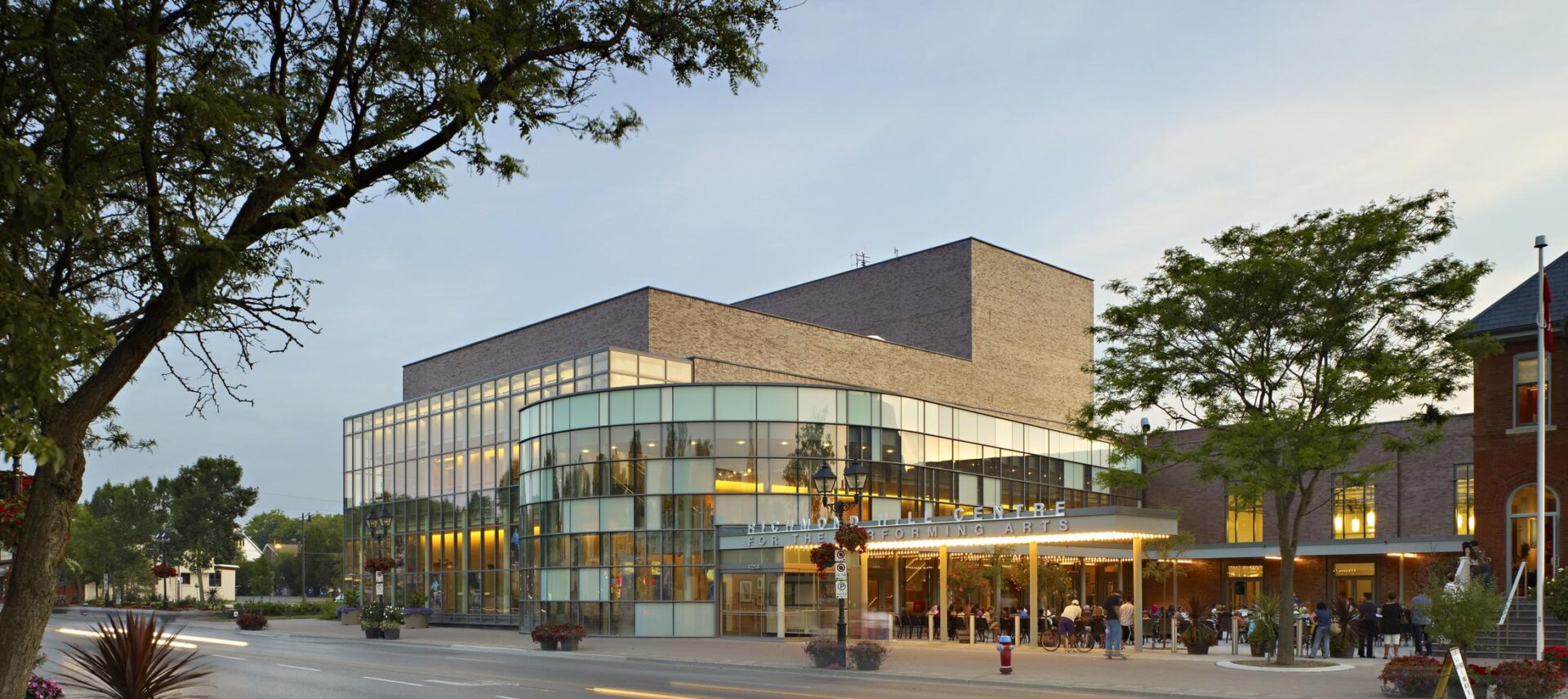
Contributors: Clive Lacey, David Peters, Dan Schoedel
As arts venues seek to embrace sustainability, they encounter a distinct set of challenges that set them apart from other building types. From energy-hungry performance spaces to aging infrastructures, these cultural hubs must balance their artistic mission with community pressure for environmental responsibility. With innovative design strategies, arts venues can not only reduce their environmental impact but also enhance operational efficiency without compromising the creative experience they offer.
The unique challenges of sustainable design in arts venues
Arts venues face several unique obstacles when it comes to sustainability, primarily because of their distinct functional and operational requirements. Here are the main challenges:
Energy-intensive operations
The energy demands of arts venues are significantly higher than those of standard commercial buildings. In addition to complex theatrical systems like motorized rigging, lighting, and sound, these venues rely heavily on substantial HVAC (heating, ventilation, and air conditioning) systems to maintain the right temperature and air quality. These systems not only ensure the comfort and safety of patrons, performers, and staff but also help preserve equipment and sensitive materials, making energy efficiency a persistent challenge.
Intermittent use patterns
Arts venues operate on variable schedules, often hosting events with widely fluctuating attendance. This can cause inefficiencies if the systems serving these spaces are unable to respond to these changing demands. For example, on a show day, a full-scale production might require maximum energy for lighting, sound, and HVAC for 3-4 hours but remain mostly unused for the other 20 hours and be completely unused during dark days between shows. These irregular usage patterns make it difficult to implement consistent energy-saving strategies, as energy needs spike sporadically depending on the event calendar.
Aging infrastructure
Many arts venues are housed in historic or aging buildings that were never designed with modern sustainability in mind. Retrofitting these structures to meet contemporary environmental standards can be complex, requiring a careful balance between upgrading systems and preserving the venue’s architectural integrity. Additionally, preservation laws that protect these buildings often limit the scope of renovations, making it harder to implement energy-efficient solutions or reduce carbon emissions without compromising the venue’s cultural and historical significance.
High material demands
Arts venues often require specialized materials and finishes to meet both aesthetic and functional needs. From acoustically optimized wood paneling in concert halls to specialized lighting in galleries or bespoke flooring for dance spaces, these materials are often selected for their performance characteristics rather than sustainability. Additionally, because public spaces demand durability and longevity, eco-friendly alternatives, such as reclaimed or recycled materials, are often overlooked in favor of traditional materials that offer longer lifespans but come with a larger environmental footprint.
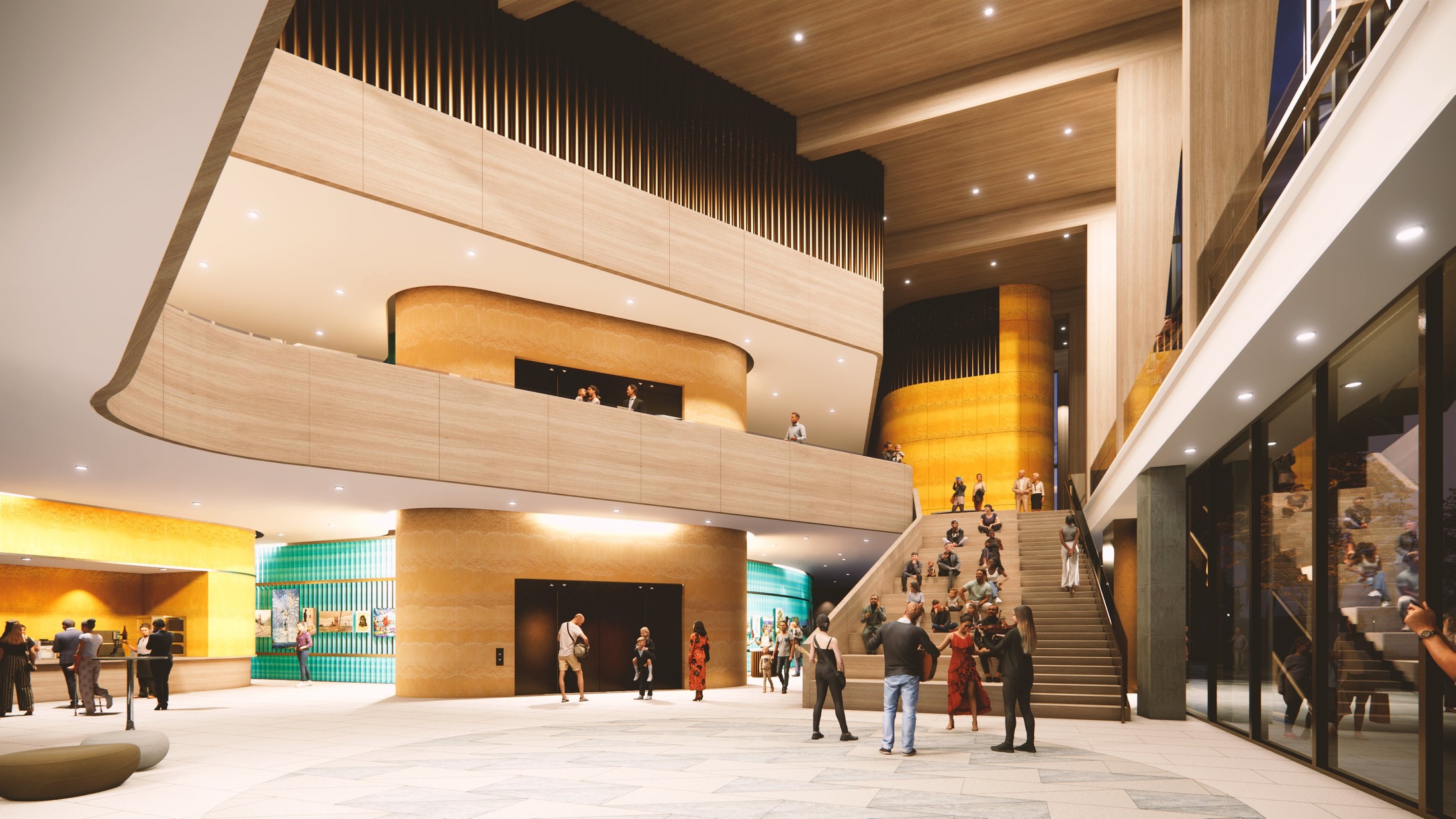
Sustainable strategies for arts venues
Despite the unique challenges, there are strategies that can enable arts venues to operate more sustainably while maintaining high-performance standards. By integrating innovative approaches to high-energy consuming systems, use of sustainable materials, and maintenance, these spaces can reduce their environmental impact without compromising artistic vision or visitor experience.
Peak load shifting for energy savings
Storage techniques such as thermal ice storage, which creates ice during low-demand hours for use in cooling systems later, and load shifting allow arts venues to reduce their peak energy demands, energy costs and carbon footprint. In addition, battery energy storage systems (BESS) can be used to store energy generated during off-peak times, such as from renewable sources like solar panels, and deploy it when demand is high. By generating and storing energy for off-peak use, venues can manage their energy more efficiently and reduce stress on both their budget and the grid while contributing to broader sustainability goals.
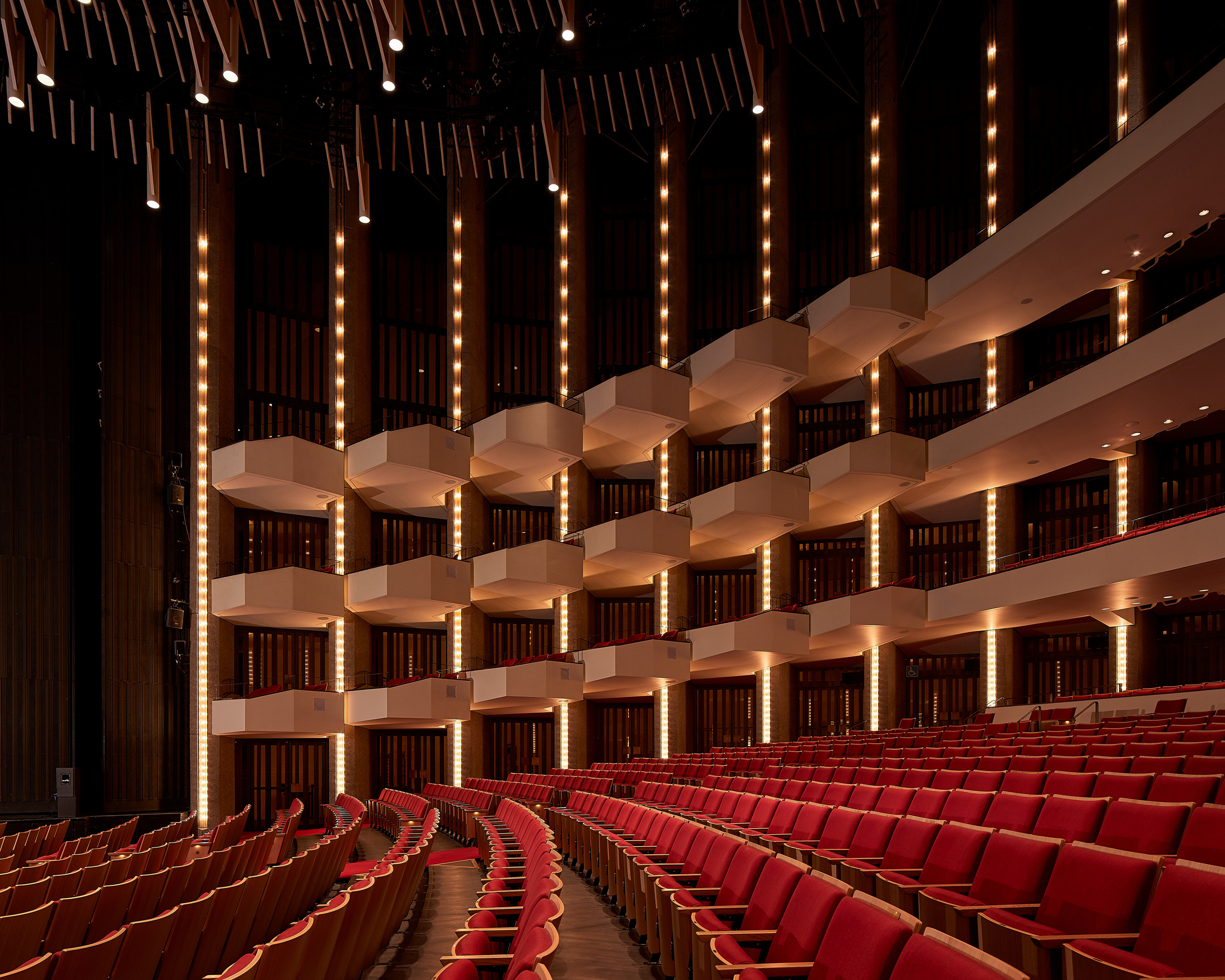
Efficient air management and climate control
Managing air circulation efficiently is critical for large arts venues that need to maintain specific background noise limits, temperature and air quality standards for patrons, performances, and the protection of assets like instruments and art installations within the building. Strategies such as low velocity underfloor air distribution (UFAD) provide conditioned air directly to occupant zones, reducing energy use and improving acoustics by minimizing overhead HVAC noise. Variable speed control on main fans also offers the ability to adjust airflow based on the specific demands of an event, avoiding unnecessary energy consumption.
Additionally, natural ventilation and external shading techniques can reduce the reliance on mechanical cooling systems by using the building’s design and natural airflows to regulate indoor temperatures, particularly during off-peak hours. Dehumidification is another critical aspect, as managing humidity levels is essential not only for the comfort of attendees but also for protecting sensitive materials. Variable flow of both exhaust and make-up air with efficient air management systems can incorporate dedicated dehumidification processes and minimize related energy use.
Heat recovery and reuse
Arts venues can significantly reduce energy waste by recovering and reusing heat generated within their HVAC systems. Heat recovery systems capture warmth from exhaust air and repurpose it to preheat incoming fresh air or warm other parts of the building. The amount of outside air brought into the venue can vary with occupancy, so no money is spent to heat or cool what’s not needed. Heat recovery chillers offer another reuse solution by using the heat from cooling processes to warm perimeter spaces with heat from interior zones and 24/7 loads, allowing venues to optimize their simultaneous heating and cooling needs.
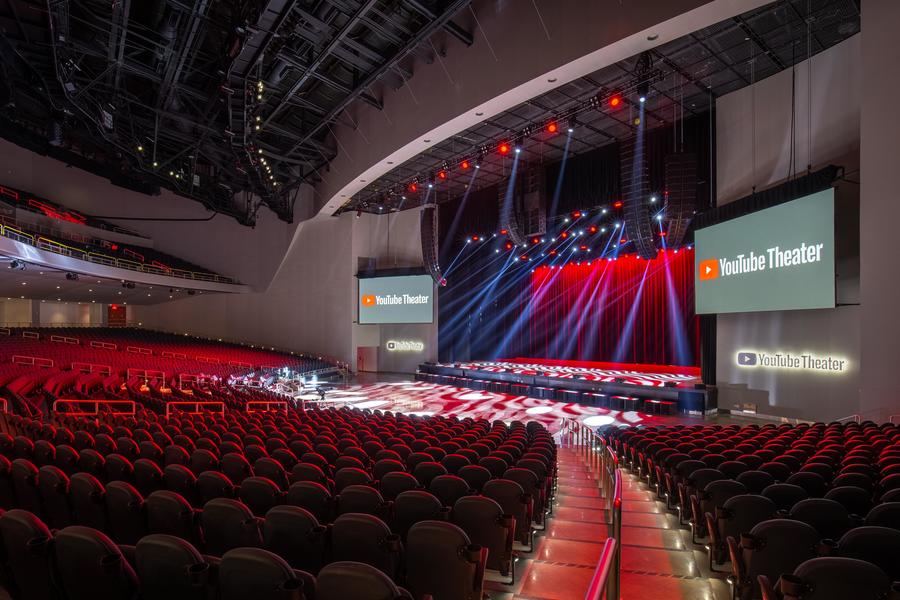
Energy-efficient lighting
Lighting is an energy-intensive aspect of arts venues, particularly in theaters and performance spaces. LEDs are well-known for energy savings and have been readily adopted in new venues for architectural lighting. The transition to LED for performance lighting initially lagged due to waiting for the fixtures to replicate the warmth and precision required for theatrical productions, but the technology has recently improved. This has allowed for retrofits of buildings to cut their theatrical power needs by up to 2/3rds. This, coupled LED fixtures versatility to color change, has enabled designers to unleash their creativity like never before. What used to take three conventional fixtures for a 3-color wash can now be accomplished by one fixture than can recreate any color. Moving light manufacturers are now releasing light engine upgrades that allow customers to replace just the LED element of the fixture, instead of replacing the whole fixture for a brighter light source. Although the upfront capital investment for retrofitting existing venues can be substantial, the return on investment (ROI) is achievable through significant reductions in energy consumption and maintenance costs.
Intelligent building management systems and zoning
Implementing building management systems (BMS) and zoning strategies allows arts venues to optimize energy use by monitoring and controlling various building functions, such as lighting, HVAC, and security, in real time. Sensors can be leveraged in this strategy to provide real-time data on occupancy, temperature, humidity, and air quality throughout different zones of the building. By dividing the venue into zones and using sensor data to adjust energy consumption based on actual occupancy and activity levels, venues can significantly reduce energy waste. For example, a performance space can operate at full capacity during events while less-used areas like rehearsal rooms, lobbies, or offices can automatically shift into low-energy modes when unoccupied.
Sustainable material selection and lifecycle management
Strategies like using reclaimed or recycled materials; selecting locally sourced, low-impact materials; and considering the full lifecycle of materials from construction to disposal can significantly reduce the environmental impact of a venue. Incorporating environmental product declarations (EPDs) can also help decision-makers evaluate the environmental impact of different materials by providing transparent data on factors such as energy use, emissions, and material sourcing. Prioritizing materials that are durable and sustainable addresses the high material demands in arts venue construction, allowing for a balance between performance, aesthetics, and environmental responsibility.
Ongoing maintenance of the building envelope
Over time, even well-constructed envelopes can degrade due to weather, natural wear, or building settlement and lead to air leaks, moisture infiltration, and thermal inefficiencies. Regular building envelope commissioning—which includes inspections, performance testing, and corrective maintenance—ensures that the venue continues to perform as designed. This ongoing process allows for the early detection of issues such as deteriorating seals, insulation failures, or water damage, which can compromise the venue’s climate control systems and increase energy costs. For arts venues, where temperature and humidity control are critical, consistent envelope maintenance not only preserves the building’s energy efficiency but also safeguards the assets housed within.
How Salas O’Brien can help
Salas O’Brien is deeply experienced in sustainable design and engineering solutions tailored to the unique needs of arts venues. Whether it’s in a new building or navigating the complexities of retrofitting historic buildings, implementing advanced systems like energy-efficient lighting, theatrical systems, HVAC optimization, and building automation, we provide customized strategies that balance performance with sustainability. Reach out to one of our contributors below for help with your planning or project.
For media inquiries on this article, reach out to Stacy Lake, Director of Corporate Communications.
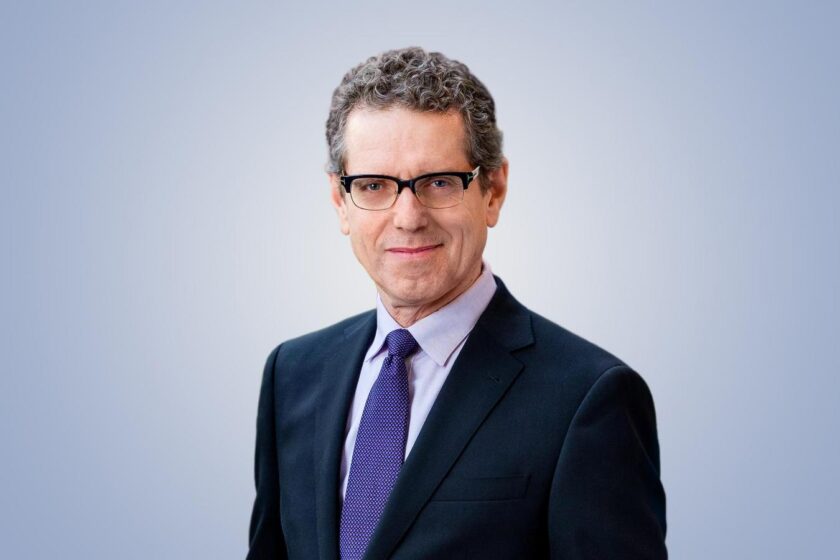
Clive Lacey, P.Eng.
Clive Lacey’s breadth of experience includes award-winning, high-profile buildings in the performing arts, civic, healthcare, educational, and pharmaceutical sectors. Clive is committed to conservation efforts and takes a hands-on, common-sense approach when advising clients on cost-effective and energy-efficient solutions. As a mentor, communicator, and facilitator, Clive encourages the transfer of knowledge as a basic principle, which is a great client advantage. Clive serves as a Managing Principal at Salas O’Brien. Contact him at [email protected].

David Peters, PE
David Peters has over 25 years of experience specializing in the design and application of HVAC systems for both new and existing buildings. His expertise includes the layout and design of medium and low-pressure air delivery systems, hot and chilled water systems, energy recovery air systems, water source and geothermal heat pump systems, and DX systems. David is also proficient in building energy modeling, energy evaluations, and LEED documentation. David serves as a Project Manager and Senior Engineer at Salas O’Brien. Contact him at mailto:[email protected].

Dan Schoedel, MET, LEED AP
Dan Schoedel is an entertainment lighting designer whose experience bridges theatrical and concert venues, arenas, stadia, and other spaces where people gather to share an experience. A specialist in immersive environments, Dan works at the crossroads where new technologies merge to create innovative experiences. Dan has a Masters in Entertainment Technology from Carnegie Mellon University and serves as a Senior Consultant at Salas O’Brien. Contact him at [email protected].